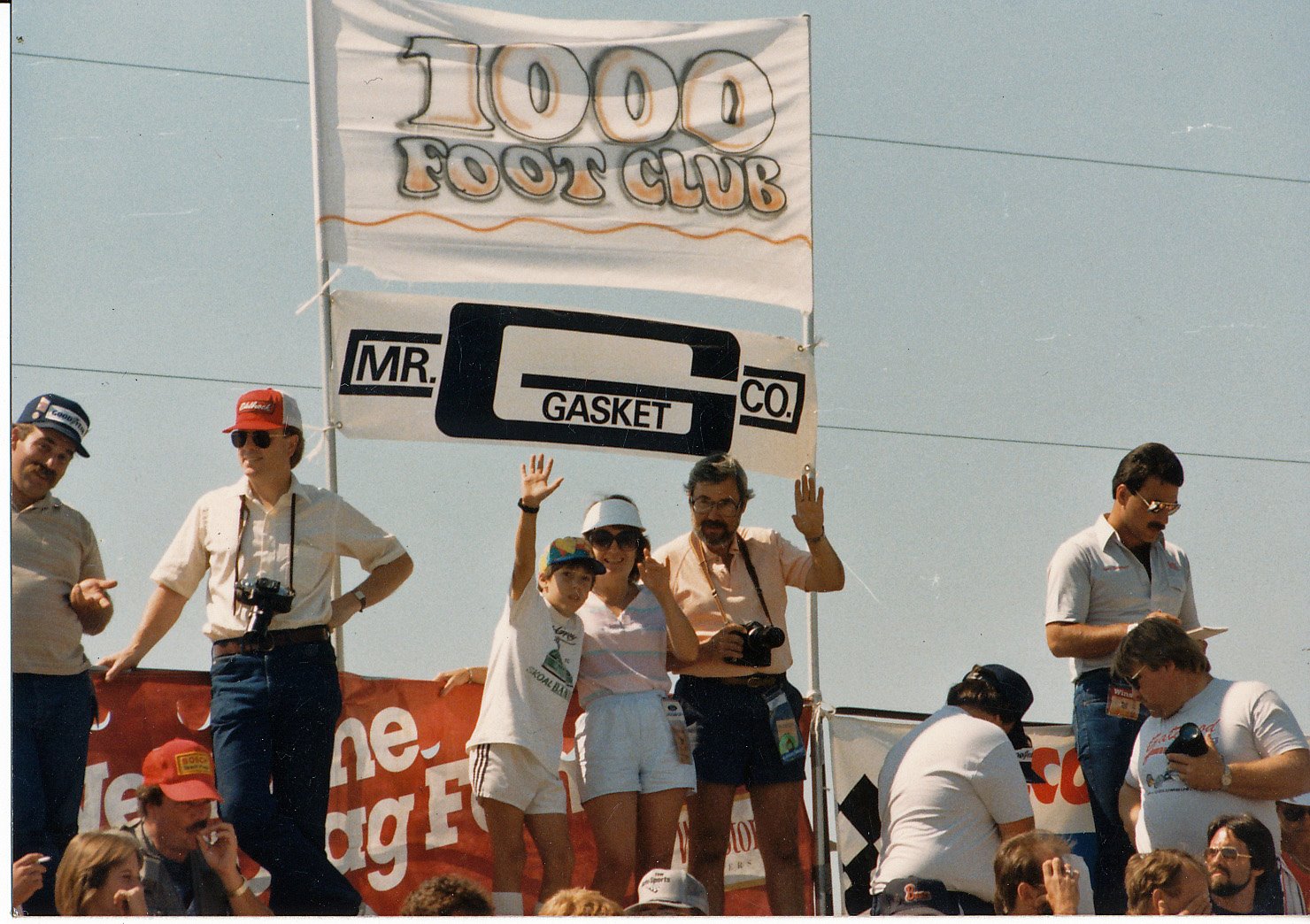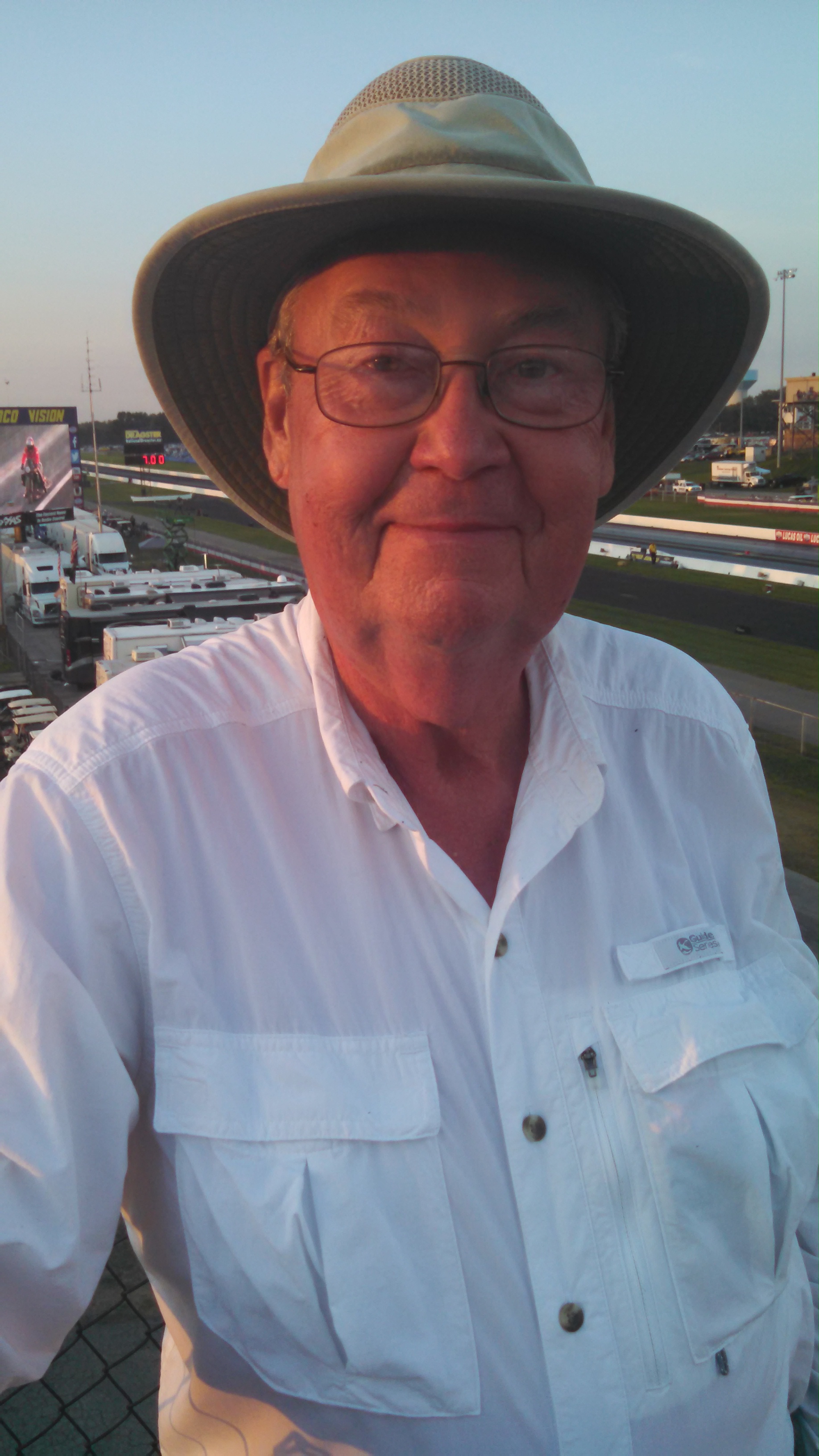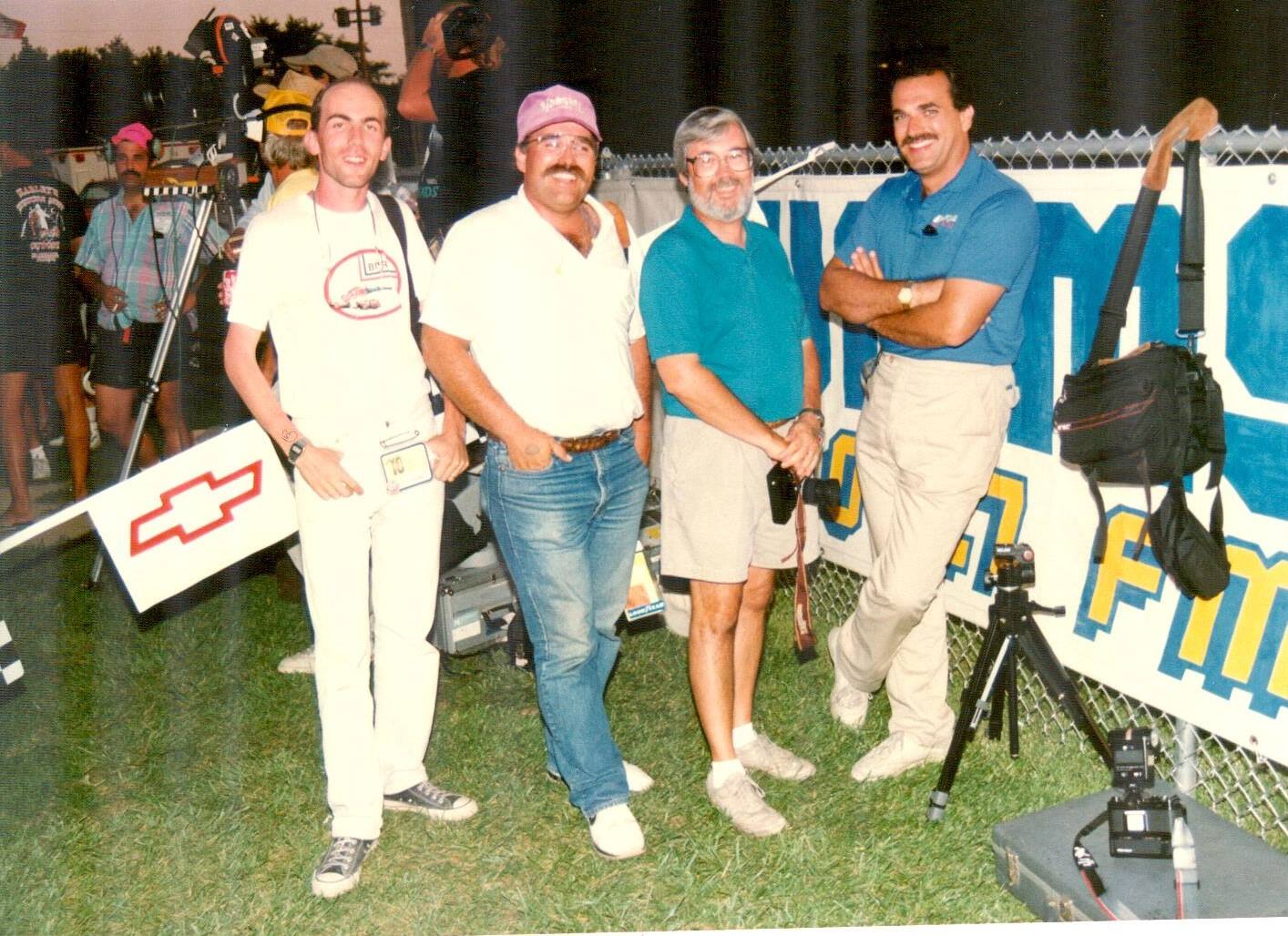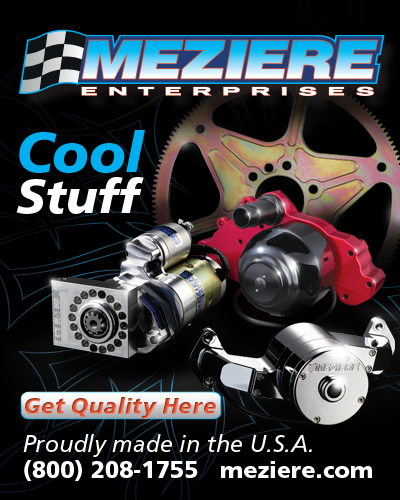LEGENDARY PHOTOGRAPHER TOM SCHILTZ REMEMBERED

Tom Schiltz - January 19, 1945 – August 25, 2017
 Acknowledged as one of drag racing’s greatest photographers, Tom Schiltz will forever be remembered for his business acumen, affable personality and genuine friendship to virtually everyone he met throughout his life.
Acknowledged as one of drag racing’s greatest photographers, Tom Schiltz will forever be remembered for his business acumen, affable personality and genuine friendship to virtually everyone he met throughout his life.
A lifelong resident of North Canton, Ohio, Tom first discovered drag racing at the Derby Downs and Akron-Fulton Airport tracks in the 1950s. He began chronicling his trips to the races through photography and quickly developed a notable skill. Schiltz attended the NHRA U.S. Nationals for the first time in 1961, the year it came to Indianapolis Raceway Park, and the sport’s biggest meet became a tradition for Tom over the next fifty-five years.
Tom soon began attending events throughout Ohio by virtue of his friendship with Dave and Susie Koffel whose “Flintstone Flyer” Gassers had put North Canton on the drag racing map. While traveling with the Koffel family, Tom began submitting photos to various drag race publications where his talents were noticed and published.
He soon married the love of his life, high school sweetheart Carol Button, who often travelled with Tom to events and maintained a constant presence at his side for more than a half-century. Their mutual devotion was obvious to all who knew them; Tom purchased the wooden North Canton phone booth from which he would call Carol while they were first dating, had it restored and placed it on prominent display in their spacious home.
While Tom pursued photography as a paying hobby, he began working for CopeCo, a company at the leading edge of early photocopier technology. His knack for business was already apparent; Schiltz was a renowned billiards “pool shark” through much of his youth and was talented enough to generate a sizeable income from his work on the tables. Over a period of thirty years, however, young Tom worked his way through the ranks at the company until he became one of the company’s directors; he was celebrated within the industry for his ability to work closely with customers around the globe, each of whom he considered a personal friend. Simultaneously, Schiltz became a regular contributor to virtually all drag racing newspapers and magazines. By the 1970s, his photos were in demand by so many publications he, like so many other authors and “shooters” in the sport, often used a pseudonym. Thus, after forty years, it can be made public Tom also worked under the nom de plume “Carl LaFong”, the name of the lead character played by W.C. Fields in the 1934 film, “It’s A Gift”.
Tom accepted the position of photographer for the National Hot Rod Association’s Division III, (offered by the Division Director Bob Daniels and his wife, Eileen), which entailed shooting the images for (and retaining the rights to), all NHRA Divisional, Regional and National Events within the jurisdiction of the Division. It was this job which opened an avenue to every racer competing in the sport’s most populous geographical area and allowed Tom to add friends and customers by the thousands to what was still a hobby and secondary income.
During his tenure as the Division III photographer in the 1970s, Tom forever changed the art of drag racing photo sales with a brainstorm for the NHRA U.S. Nationals. In an era when photos could only be viewed as quickly as the photographer could chemically develop the image, photographers at racing events could seldom deliver a shot during a race. Schiltz decided to shoot each of the one thousand vehicles in competition at Indy and have gigantic sixteen inch by twenty inch prints available each following morning ready for purchase. Schiltz contacted the largest professional photo lab in Indianapolis and worked a deal in which each day’s film could be delivered to the lab in the evening and the lab would have the images ready for sale by 5:00 AM the next morning. Schiltz would pick up the prints and organize them for a group of sellers who would deliver the pictures to racers as the sun rose over Indianapolis Raceway Park. At the time, racers had no physical evidence to see how their car was performing during an event but Tom’s photos were received as a miracle of technology…and he sold virtually every one.
During Indy’s earliest years, Tom positioned himself on the fence three-quarters the way down on the western side of IRP. It became his annual “base” and later led to the official creation of the “1000-Foot Club”, a gathering area for a huge group of media members and hardcore spectators, in 1978.
Another innovation which will forever connect Schiltz with drag racing’s biggest event was his “drag racer’s hostel” for which Tom paid the charges at the American Inn located in Speedway, Indiana. During the week-long U.S. Nationals, Tom reserved several “kitchenette rooms”, (later referred to as “suites”), and would open the doors to any racer, member of the media or even spectator who needed a place to sleep. It was not unusual for each room to be packed with ten or more people and the beds and showers were only available on a “first come, first served” basis but Tom only accepted donations and, if the boarder had nothing to give, so be it. The benefactors of this example of Schiltz’s philanthropy were some of the best-known names in the drag racing media and, incredibly, some of the sport’s biggest drivers.
Whichever endeavor was chosen by Tom, he chased it with a fervor and a desire for excellence. Hence, when Schiltz took up golf, he became a man obsessed and played the game, (with Carol), at any and all opportunities often with clubs he designed and created himself.

By the turn of the century, Tom became the owner of CopeCo and, having made the small company into a genuine global corporation, sold the business for enough money to truly enjoy his retirement. He was able to indulge in his love of FIAT automobiles, purchasing multiple museum-quality examples which he and Carol often displayed at major car shows.
Although he shot every form of motorsports from oval track racing to tractor pulls, Tom became enamored with land speed racing on the Bonneville Salt Flats in Utah and became one of the best to photographically chronicle the world’s fastest sport over the past twenty-six editions of “SpeedWeek”. He was a charter member of Bonneville’s group of hardcore media members and legends known as “The Kilo Klub”.
Unlike many of his early motorsports photography peers, Tom embraced digital technology as it was introduced and was always at the forefront of the newest shooting and editing technology. He continued to cover events for various publications and websites through the years and, as always, was scheduled to cover the 2017 NHRA U.S. Nationals at what would have been his fifty-sixth “Indy”.
Although Tom Schiltz loved drag racing, loved golf and loved FIATs, none could compare for the joys derived from his love of family. Along with his pride of his siblings and his wife, Carol, he was most proud of his sons, Andrew and Benjamin, and his grandchildren. The love he displayed for every member of his family was overwhelming but his smile was the proof of his happiness.
Tom Schiltz will be remembered for his photographic talent, his business instinct and his determination to excel in a variety of disciplines. To those whom he invited into his life, however, he will be remembered for his humor, his gentle personality and the loyalty to all those in his world. He truly believed that, without those he loved, he was nothing.






































